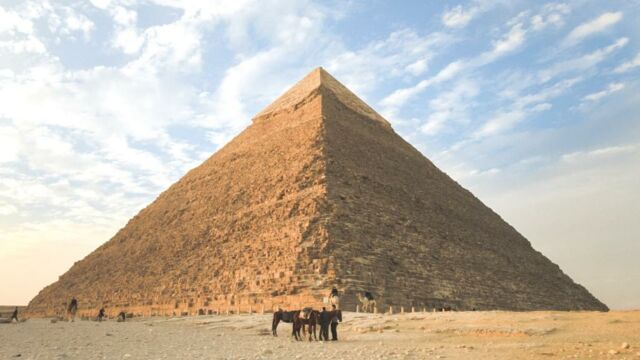Following in the footsteps of Egypt and China, Indonesia could now also be the setting for one of the world's most enigmatic monuments: the pyramid. Specialists on the Asian archipelago have just discovered one under a hill. And not the least: it's said to be the oldest ever unearthed. This is what scientists have just revealed at a conference held as part of the annual meeting of the American Geophysical Union (AGU).
Discover our latest podcast
For several years, researchers have been studying Gunung Padang, a 'hill' culminating at an altitude of 885 metres, some 50 kilometers south-west of the town of Cianjur. The site is crowned by a remarkable megalithic site, the largest in Southeast Asia. It has been known to the Western world since its discovery by Dutch settlers in the early 20th century.
But the multitude of stones that line the summit of the mound are - according to the scientists' revelations - only the tip of the iceberg. Indonesian researches explained:
The structures are not just superficial, but rooted deeper down.
A much larger structure than expected
The specialists added:
Our work shows that the structure not only covers the top [of the hill] but also envelops the slopes, covering [thus] an approximate area of at least 15 hectares.
To make such claims, the team relies on solid scientific evidence. The researchers used a combination of cutting-edge geophysical methods - ground-penetrating radar and seismic tomography - to probe the bowels of the hill. Drilling and soil analysis also enabled them to refine their interpretations. Andang Bachtiar, independent geologist and drilling operations manager, explains:
What was previously thought to be a simple surface construction actually extends downwards - and it's a huge structure.
An 'enormous structure' built up over the course of history, the result of the superimposition of countless layers of stone. A few metres below the surface, a series of mineral columns would be hidden. At an even lower level, geophysicists have detected a series of cavities and chambers - some fifteen metres deep.
Read more:This hidden pyramid contains a mysterious love note from a Royal Family member
A not-so-natural shape
But in addition to this heap of man-made achievements, it's also the shape of the whole that leads scientists to a bold interpretation. According to them, the elongation of the structure, coupled with the half-moon shape of its front section, are signs of the building's religious functions. Geophysicist Danny Hilman Natawidjaja tells the Live Science website:
This is a temple without equal [elsewhere in the world].
Although still controversial within the scientific community, these interpretations could - if confirmed - have revealed one of the world's oldest pyramids. Carbon-14 dating places the origins of the building's third stratum - the deepest - between 9,500 and 28,000 years ago.
A rather wide range, but one that confirms what Danny Hilman Natawidjaja had already said in 2013:
People think that prehistory was a primitive [period], but this monument proves that this is not true.
Whether they're Egyptian, Chinese or now Indonesian, the pyramids have definitely not finished overturning our historical certainties.
Danny Hilman Natawidjaja is also the author of a brand new study, published in Archeological Prospection. This work has yielded new information about the pyramid, and as Arkeonews reports:
Led by geologist Danny Hilman Natawidjaja and his team at the Indonesian National Agency for Research and Innovation, the new study suggests that Gunung Padang dates back to the last Ice Age, around 25,000 to 14,000 years ago.
Read more:This is the highest waterfall in the world, and you'll never guess where it is (PHOTO)
This article has been translated from Gentside FR.
Sources used:
AGU Conference: NS33B-0785: Evidences of Large pyramid-like structure predating 10,000 Year BP at Mount Padang, West Java, Indonesia: Applications of geological-geophysical methods to explore buried large archeological site
LiveScience: Long-Hidden 'Pyramid' Found in Indonesia Was Likely an Ancient Temple
Archeological Prospection: Geo-archaeological prospecting of Gunung Padang buried prehistoric pyramid in West Java, Indonesia
Arkeonews: New evidence suggests Indonesia’s Gunung Padang could be world’s oldest known pyramid















